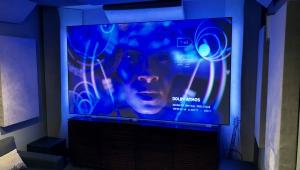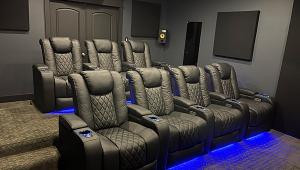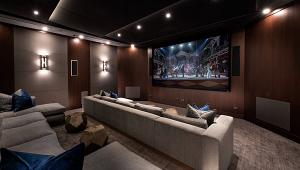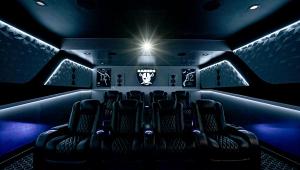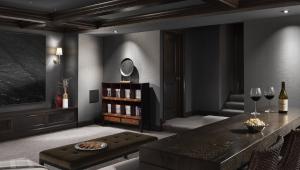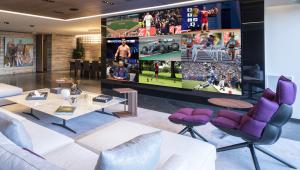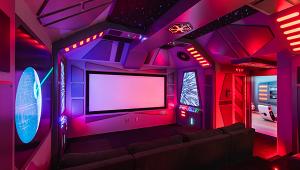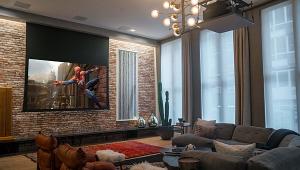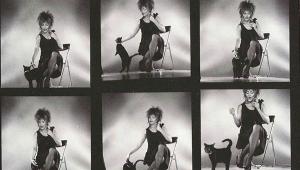How to Choose a Home Theater for Movies or Music

The first step is to figure out where you fall on the music/home theater scale. And, of course, the best time to think about all of this is before you buy a system. Ask yourself a few questions: Do you and your family listen to a lot more music than watch movies, or is it the other way around? When you do listen to music, is it on for background as you go about your business, or do you love to sit down in front of the speakers and immerse yourself? Then there are aesthetic considerations—the gear’s appearance and how it fits in with your décor. How will those factors influence your buying decisions? Be honest with yourself. If you’re an audiophile who no longer has time to listen but your family will be using the system daily for TV and movie viewing, you’ll want to plan your budget accordingly.
Vive la Différence!
Some are quick to say that good sound is good sound, period. So is it really true that music and movies sound all that different from each other? Yes and no. The very best music recordings and soundtracks enjoy similar traits, such as wide dynamics, timbral accuracy, and spatial characteristics that use the available speakers to re-create a sense of three-dimensional realism. Nonetheless, movie and music tracks do differ in how they’re made and how they’re equalized and processed in the studio.
To start, today’s films boast nearly unlimited soft-to-loud dynamic range; dialogue is mixed to the center channel; surround effects may be ambient or point-sourced; and deep-bass demands can be extreme. Just about every feature film released in the last 20 years has had a multichannel soundtrack.

On the other hand, most mainstream music recordings are dynamically compressed, and deep-bass effects can be nonexistent. For home theater, the subwoofer’s prime responsibility is supplying room-shaking low-frequency effects. For music, the sub needs to deliver pitch-accurate, tightly controlled bass that’s perfectly integrated with your speakers. And while an exceedingly small number of new music recordings are available in multichannel sound, stereo still rules in the music world. Getting thoroughly convincing imaging, focus, and soundstage depth out of just two speakers calls for exemplary speaker design.
The wide dynamic range of movie soundtracks is also linked with high volume capability. All of the speaker and electronics manufacturers’ representatives I spoke with while I wrote this article told me their customers tend to play movies louder than music. That ups the power requirements for home theater over music-oriented systems. For home theater, sound plays a supporting role—video quality and onscreen action grab the lion’s share of your attention, so you might miss or be more able to overlook subtle sonic deficiencies. But a music-oriented system’s ability to entertain and engage us succeeds on sound quality alone, so tonal accuracy and sonic integrity—or the lack thereof—are more critical and become more obvious.
I think I’ve made the case just how different the sonic demands of music and movies are, but most Home Theater readers have dual-purpose, home theater/music systems. That’s the reality, so consciously steering the sound balance toward your preferences is the smart move.
Size Matters, a Lot
Before you can select either speakers or electronics to drive your system, take a good look at your room. If it’s big—say on the order of 2,500 cubic feet or larger—and you crave a visceral, feel-the-sound-in-your-bones experience with movies and music, you might seriously consider buying fullsize, full-range speakers, and audio separates with a powerful dedicated amplifier instead of an A/V receiver. Big floorstanders backed by serious power reserves will typically play louder and with lower distortion than small monitors, even those backed by a sub. In my experience, they sound bigger and more dynamically alive than small sub/sat systems, and in a carefully designed full-range speaker, the bass, midbass, and midrange integration is inherently excellent—something that’s rarely duplicated in sub/sat systems. And even if you only want to crank your system just once or twice a year to impress your home theater pals, it’s nice to have the capability. I suppose it’s analogous to buying a Porsche for your daily commute: Although you rarely touch 80 miles per hour, it’s good to know it’ll go 180 when the urge strikes. That capability doesn’t come cheap, though—in cars or in audio.

When I brought up the question of room size with Mark Casavant, vice president of product development for the Klipsch Group (Klipsch, Energy, Mirage, and Jamo speakers), he was adamant about the need for large power reserves and/or very efficient speakers to match a big space. “Once you’re up in the 3,000-cubic-foot range and want to achieve 105-decibel peaks [soundtrack reference level] in the listening position, you need a very capable system,” he said, noting that the demands placed on subs in large rooms can also be extreme. Here, going with two or more subwoofers would make a lot of sense. Casavant thinks surround effects can be pretty subtle, but the impact of multiple subs is something you can literally feel.
If you’re serious about your movies, room size might also affect how many speakers you need to buy for your surround system. A bigger space may need extra surround speakers in the rear to better fill the room, although no one seems to be advocating extra speakers for the latest enhanced surround modes like Dolby Pro Logic IIz or Audyssey DSX. That’s interesting, if only because you’d think speaker manufacturers would be in favor of more speakers. When I asked Casavant if his home theater customers are buying 7.1- or 9.1-channel systems, his response—and that of every other speaker manufacturer I contacted—was the same: 5.1-channel systems represent the bulk of the sales. Not one spokesperson recommended going to seven or more channels for all but the largest rooms.
